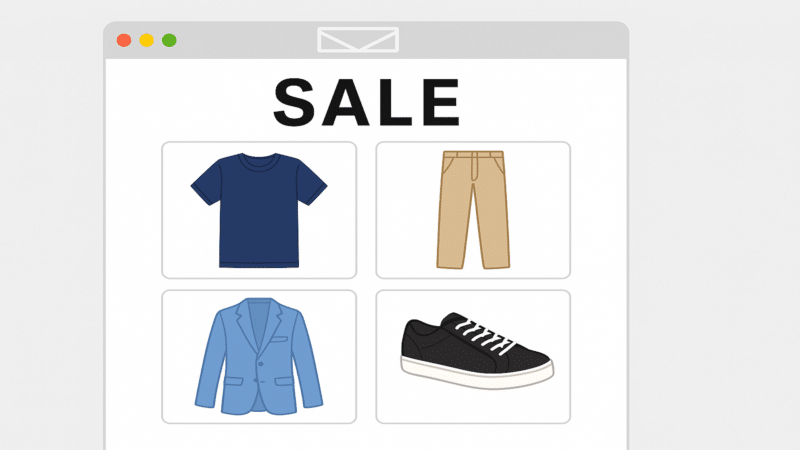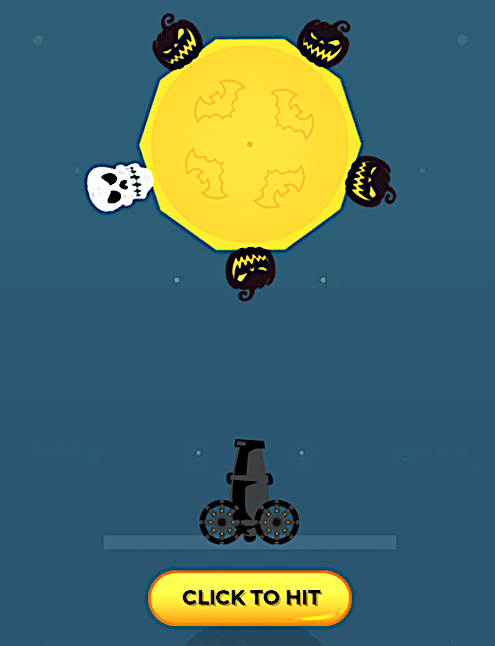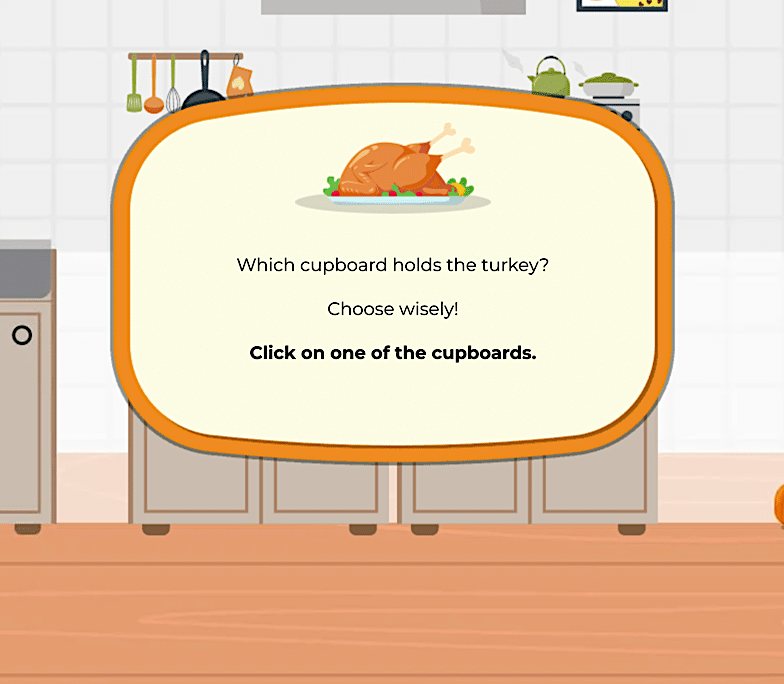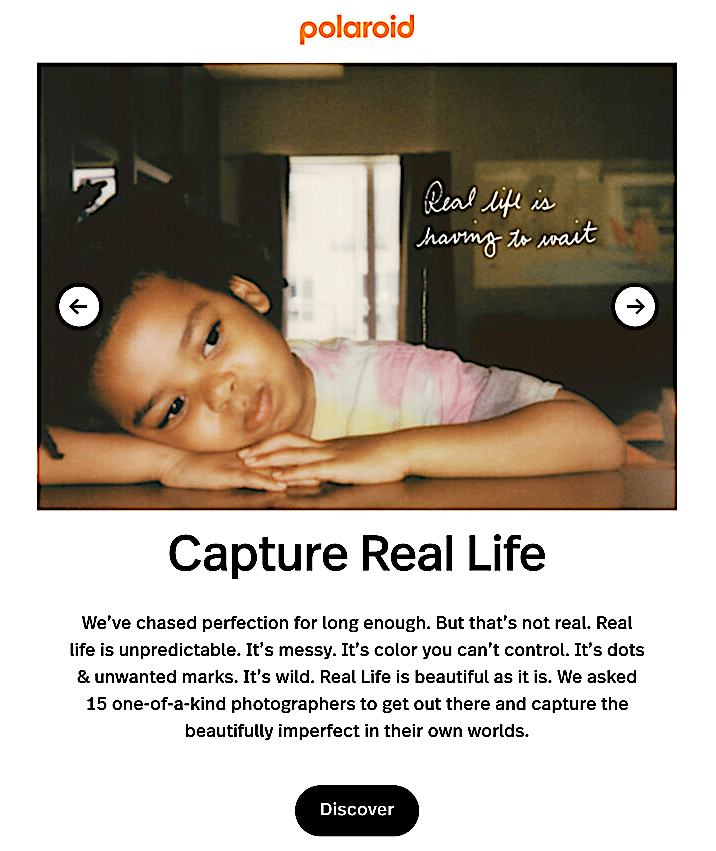
With inbox fatigue at an all-time high, brands need more than static messages to capture attention. Interactive emails turn passive readers into engaged participants — whether through quizzes, carousels or gamification — creating experiences that boost engagement, conversions and brand loyalty.
From trend to strategy: How interactivity drives results
Social media platforms punish their brand advertisers, influencer marketing loses its edge, but email just keeps on keepin’ on. Why? Because it reinvents itself to overcome new challenges, remain relevant and deliver value to users and senders alike.
Brands that keep up with email developments, invest their time and resources smartly and have a strategic purpose for everything they do with email will continue to reap the benefits this popular channel delivers.
One challenge is keeping email users interested in brand messages in the face of inbox fatigue. Interactive email helps combat that when used strategically. It has graduated from “shiny new toy” status to become a winning tactic that keeps subscribers’ attention when used strategically and purposefully. Interactivity involves subscribers in the email; they aren’t just passive viewers.
In the short term, interactive emails — or “kinetic” to refer to an even more immersive experience — give customers the exciting experience they expect today from emails. This can deliver a long-term benefit — they’ll look for, open and act on your emails instead of ignoring them, leading to more engagement and higher deliverability.
As I explain below, this is still a controversial viewpoint among many in the email community. However, my work with clients shows that interactive email can create more value for customers and drive greater results for your business.
A quick look at interactive emails
For simplicity, I will refer to interactive and kinetic emails as interactive. Both include many elements and capabilities that let users engage directly with the email, giving them more options than just clicking a link. You can create them using AMP for Email, HTML5 and CSS3 animations. Below are my top seven interactive elements.
1. Carts and forms
Customers can shop, manage their carts and begin the purchase process inside the email instead of merely using the email as the bus that takes the customer to your website. Or they can fill out forms to register for events, content downloads and the like.
2. Image carousels
Pack more information into a small space with this 21st-century version of the old-fashioned slide carousel. Customers can click through groups of images displaying new products, features, FAQs or step-by-step guides.
3. Surveys, polls and quizzes
Your recipients can answer a survey, vote in a poll or fill out a feedback form without leaving the email. Some uses also display real-time poll results. These elements generate data you can use to segment your messages and understand your customers better.
4. Hover effect
The hover effect adds CSS animation to call-to-action buttons, images, brand icons and other graphic elements in the email. It adds a little pizzazz to your design, but it also can help your customers navigate more easily on a small screen or add some explanatory text to an image without taking up more space in the email.
5. Gamification
This is huge across all digital interactions now, and email can bring the excitement through AMP for Email, HTML5 and CSS3. See the lookbook for a great example that will demand all the skills you built up playing Asteroids at the mall arcade.
6. Offer reveals
These can use hover effects or other devices, such as a scratch-off animation, to create suspense while revealing a discount, special offer or other surprises within the email.
7. Accordions
Like an image carousel, the accordion allows you to pack in extra information that reveals itself only to people interested enough to click, tap or hover over the module. This includes terms of service, FAQ answers, special offers or similar information.
Dig deeper: 5 impactful ways to level up your email marketing designs
Interactive emails in action: The lookbook
Over the years, I’ve collected dozens of examples of email marketing messages that illustrate the strategic, purpose-driven use of interactivity in an engaging and sophisticated fashion. It was hard to limit myself to just seven for this post! Click on any image to try out the email for yourself.
Email Mavlers (formerly Email Uplers)
- Theme: Skull-O-Ween.
- Goals: Engage audience, increase time in email, demonstrate skills, build awareness through social sharing.
- Interactive element: Gamification.
Why this works
Email Mavlers devised this Halloween-themed game that keeps players engaged in two ways: If you fail, it’s easy to try again. If you succeed, you automatically move on to the next harder level. Game on! I made it to Level 3 on my second try.
Balaji Thiyagarajan, Marketing Lead, Email Mavlers, says:
“We use gamification to keep subscribers emotionally and mentally invested. Our Skull-o-ween and Thanksgiving emails weren’t just fun — they were crafted to tell a story, build anticipation and reward engagement.”
Dior
- Theme: Interactive gift selector.
- Goals: Help shoppers find the right gifts; reinforce brand image of elegance and taste.
- Interactive elements: Quiz.
Why this works
This gorgeous email eclipses all other email guides. Shoppers use the quiz to build a persona of their recipient. At the end, the quiz reveals the persona (Unicorn? Dragon? Starfish?) and suggests gifts that match it. The on-point questions leading up to the gift reveal make the suggestions feel more authentic than a static pairing of traits and gifts.
Bonus: The email framework can be used year-round with just a little redesign to match each gift-giving season or reason.
Email Mavlers
- Theme: Thanksgiving.
- Goals: Build engagement, demonstrate interactivity skills (tell brand story), create an emotional tie.
- Interactive elements: Gamification, animation, real-time countdown clock.
Why this works
Email Mavlers ties its awareness campaign to a Thanksgiving celebration using challenges that succeed or fail based on the user’s choices. Amidst all the clicking, it also incorporates a countdown clock that pauses the action and keeps the user in the email for an extra five seconds.
Kate Spade
- Theme: Choose style preferences.
- Goals: Audience engagement, collect preference data, increase site traffic and purchases.
- Interactive elements: Poll, real-time updates.
Why this works
This email epitomizes purposeful creativity. It accommodates seemingly disparate goals (data collection and purchases) in a natural, fun game designed to let customers express their opinions, see how others vote and get content or offers that reflect their choices.
And look at all the precious first-party data you can collect! Updating the results in real time after voting makes the poll feel even more authentic. (Note: Interactive elements aren’t available in this version of the email.)
BBC
- Theme: Dr. Who.
- Goals: Test knowledge to build interest in the next Dr. Who.
- Interactive element: Quiz.
Why this works
Whovians are a notoriously persnickety lot, maybe even more so than Star Wars, Star Trek or Marvel fans. The bar is set high to deliver an authentic experience that will draw in the most extreme fans. This interactive quiz appeals to insiders but won’t exterminate you if you guess the wrong answers.
Polaroid
- Theme: “Beautifully imperfect.”
- Goals: Encourage owners to use cameras, discover new photographers.
- Interactive element: Image carousel.
Why this works
Clicking on the arrows reveals a series of artistic photos by professional photographers that urge camera owners to explore new ways to use their Polaroid cameras daily.
Showing all these images in a single email could be hard to manage or lose impact when scrolling on a mobile screen. Here, viewers can see all the images quickly without leaving the email.
Volkswagen
- Theme: Choose your car color.
- Goals: Build interest and emotional investment in a new car.
- Interactive element: Color changer.
Why this works
If you’ve ever gone car shopping, you know the feeling of being able to customize that vehicle right down to the color. Volkswagen uses this color selector — a standard website feature — to increase the browser’s emotional investment in the car. Note how the CTA buttons match the color choices, too. (Note: Interactive element isn’t available in this version of the email.)
Dig deeper: How to produce brand-approved email designs on time and on budget
Keep the focus on helping your customers
Don’t begin your interactive journey by saying, “Let’s gamify our emails!” Instead, ask, “Could interactive emails encourage more subscribers to open and act on our emails?” Then, ask, “Which interactive element would help us achieve our goal of [fill in your goal]?”
See the difference? You will get better results if you use interactive email with purpose. The point isn’t to create a fun game. It’s to find the best way to build engagement or move customers to act the way you want. If interactivity is that motivating factor, then go for it!
Below are eight customer-focused needs you can address with interactive emails using the emails in the lookbook above.
1. Help readers manage email content
- Polaroid’s carousel email: Users can quickly browse images in the email, helping them discover new content easily.
2. Drive engagement
- Kate Spade’s live poll: Encourages immediate interaction and directs traffic to the website based on customer preferences.
- Doctor Who quiz: Users can test their knowledge, enhancing engagement with a playful and personal experience.
3. Make shopping easier
- Dior’s gift selector: Guides users through a quiz to recommend products based on their responses, simplifying the decision-making process.
4. Personalize the email experience
- Dior’s gift selector: Suggests gifts tailored to the user’s answers, reinforcing the sense of exclusivity and care.
Kate Spade’s live poll: Collects user preferences in real-time, enabling future personalization and targeting.
5. Entertain and delight
- Email Mavlers’ Skull-o-ween and Thanksgiving games: Playful games that increase time in email and encourage repeat plays and sharing.
- Doctor Who game: Challenges Whovians to complete a mission, reinforcing the brand’s identity and tapping into the competitive spirit.
6. Educate and inform
- Polaroid’s carousel email: Educates users on creative photography while allowing them to explore options interactively.
- VW’s car color selector: Allows users to explore product features or configurations in the email.
7. Encourage social sharing or customer-created content
- Email Mavlers’ Skull-o-ween and Thanksgiving games: Both ask users to share results on social media, boosting reach and engagement.
- Doctor Who Quiz: Encourages fans to share their results on social media.
8. Enhance brand storytelling
- Dior’s interactive quiz: Creates a luxurious and tailored experience, reinforcing the brand’s story of exclusivity and sophistication.
- Email Mavlers’ Thanksgiving Challenge: Tells a story that aligns with the holiday theme and touches on users’ emotions.
- Volkswagen’s car color selector: Strengthens the emotional connection to the product by helping users imagine it in their preferred color.
Two recent studies indicate that customer-focused interactivity can generate positive responses:
- Dyspatch reported that 60% of consumers said they would engage with an interactive email.
- Interactive content generates conversions “moderately” or “very well” 70% of the time, compared to just 36% for passive content, according to a Demand Metric study.
Dig deeper: How persuasive email design can influence the ecommerce customer journey
How to make interactive emails succeed
Although interactivity can drive great things for your email program and your subscribers, it requires extra handling and caution. These tips will help you create messages that deliver good experiences for your recipients and help you achieve your goals at the same time.
Make sure your messages work across email clients, devices and operating systems
One of the biggest challenges with interactive email is compatibility. AMP for Email, a key interactivity protocol, isn’t supported by Apple Mail on iPhones. As a result, its adoption is limited in the U.S. and other iPhone-dominant markets. However, in regions where Android devices are more prevalent, AMP for Email is widely used.
But that’s not the only potential problem. Continually assess your emails to see how the interactive elements help or hinder accessibility for readers with low vision or fine motor skills and other restricting issues.
Always include a fallback that moves readers to your website to enjoy the activity. The point is to build closer bonds with your subscribers, so be careful not to damage it inadvertently by excluding large sections of your audience.
Test your elements rigorously before sending your message
Focus on usability across clients. Look for actions that are intuitive and help your readers succeed. Don’t leave them guessing about what you expect them to do and never, ever let them fail!
Make your creativity purposeful
I’ve said it before, and I’ll say it again (and again and again): Strategy first! Your goal isn’t just to send an email with a fun game or a flashy image carousel. Start by defining your objective — whether it’s to convert, announce, tell a story or drive engagement. Then, determine if interactivity supports that goal. Only after that should you choose your interactive elements. This approach ensures your creativity has a clear, strategic purpose.
Keep it simple
The more you pack into your email, the more likely something could break and undo all the work you’ve put into it. Limit your email to one activity so you can focus attention on that. One exception: Look at the Email Mavlers Thanksgiving email to see how it adds a countdown timer to the interactive game to keep the reader in just a little bit of suspense — and in the email a few seconds longer.
Measure your efforts
Besides choosing your goals, know how you will measure your success. Don’t rely on the open rate. Look for clicks within the email itself and track whether your email moved more readers to complete a transaction or check things out on your website.
Ready to try it for yourself?
Maybe you’ve already experimented with interactive elements. If you didn’t see the results you expected, don’t just give up. Go back and review your efforts through a strategy lens. Did you check for browser compatibility? Use nonstandard code?
As marketers, we’re always looking for ways to get our emails opened and acted on and to have them help us achieve our goals. Interactive emails have the power and potential to help us connect better with our customers, inspire them to watch for our emails and expect great things from them. That’s a long-term goal, but it can be worthwhile if you start the right way.
Dig deeper: Is your email platform built for today’s email challenges?
The post Interactive email is the game changer brands can’t ignore appeared first on MarTech.







